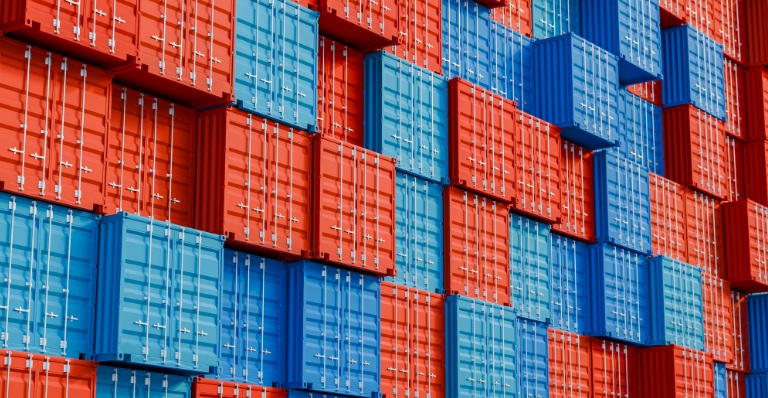The last few years have changed the way businesses and government think about trade. The free-market era, characterized by the spread of trade liberalization and embodied by institutions like the World Trade Organization (WTO) and the World Economic Forum (WEF), rested on the fundamental assumption that goods and services flow freely across borders. Economies of scale designed around comparative advantages would not only usher in an era of common prosperity, but also of greater global harmony.
Then along came the COVID-19 lockdowns, the reopening surge that tested supply chain logistics and the widening geopolitical divide associated with an emerging new world order. It seemed that the complex production systems upon which we had grown increasingly dependent were vulnerable to war, disease, extreme weather and other emergencies. As in previous episodes of global distress, trade barriers were erected, subsidies doled out, old domestic industries revived (or new ones founded), and the epitaph for globalization was written.
But, while far from perfect, a reversal of globalization, euphemistically referred to as reshoring, isn’t necessarily an optimal solution either. Analysis by the International Monetary Fund (IMF) reveals that a typical shock to global trade policy, like the 2018 buildup of United States-China tensions, reduces investment by about 3.5% after two years, decreases gross domestic product (GDP) by 0.4% and raises the unemployment rate by one percentage point.
A total fragmentation scenario—where trade is cut off between trading blocs—leads to global annual losses equivalent to 1.5% of GDP, with major damage to emerging market countries. The accompanying reorientation of capital flows would also heighten financial stresses, at a time when the global financial system is already dealing with the unwind of a decade’s worth of unconventional monetary stimulus.
You should also check out
With growing risks, Canadian companies face new challenges. EDC’s Global Economic Outlook offers insights to help you make better business decisions.
So, has globalization reached a critical turning point? Well, a look at the data tells us otherwise. At a high level, while subject to the inevitable cyclical swings, global trade-as-a-share-of-GDP rose to 57% in 2021, from just 25% in 1970. And this pattern seems to hold across almost every advanced and emerging country. In Canada, trade-to-GDP stood at 42% in 1970 and peaked at 83% in 2000. Since then, a string of global demand shocks pulled it down to the 60% to 70% range, but it’s remained remarkably stable through the turbulence of the last decade. What’s more is that trade in services has grown by more than double the pace of goods trade, and the movement of data between countries is also at an all-time high.
On the issue of friend-shoring, the trendy term behind the politicized notion that economic ties will be segmented into politically aligned blocs, the IMF recently observed that foreign direct investment flows are increasingly splintering along ideological lines. However, on the other side of the international financial ledger, we note that the Organisation for Economic Co-operation and Development (OECD), led by the U.S., has been running increasingly significant trade deficits over the last number of years, reaching US$348 billion in 2021. But large deficits imply equally large and offsetting surpluses elsewhere.
Where are those surpluses? Well, for the most part, they’re found in countries run by (you guessed it) autocratic governments. What that tells us is that our modern economies have evolved to depend on one another. So much so, that no one region or ideological camp can be fully self-sufficient. While there may be periods of adjustment, we won’t easily walk back from that evolution.
The bottom line?
Since the origins of global trade, when the Silk Road connected Asia, the Middle East, Africa and Europe, the process of globalization has navigated its ups and downs. But, over time, driven by the economic benefits it delivers, globalization has endured.
While supply chain management was once only about cutting costs, companies are now looking to balance the equally important demands of improving resilience and cutting carbon emissions as well. Rather than deglobalizing, companies are de-risking. Many are standardizing products and manufacturing equipment to move away from country-specific production. Others are adopting new risk management practices, adjusting away from just-in-time delivery toward just-in-case inventory, and exploring dual-sourcing solutions. But to paraphrase Winston Churchill, while globalization may be the worst economic paradigm, it’s certainly better than all the others.
This week, special thanks to Richard Schuster, senior economist in our Economic and Political Intelligence Centre.
As always, at EDC Economics, we value your feedback. If you have ideas for topics that you would like us to explore, please email us at economics@edc.ca and we’ll do our best to cover them.
This commentary is presented for informational purposes only. It’s not intended to be a comprehensive or detailed statement on any subject and no representations or warranties, express or implied, are made as to its accuracy, timeliness or completeness. Nothing in this commentary is intended to provide financial, legal, accounting or tax advice nor should it be relied upon. EDC nor the author is liable whatsoever for any loss or damage caused by, or resulting from, any use of or any inaccuracies, errors or omissions in the information provided.





